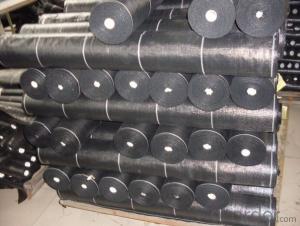Geomembranes: A Contemporary Wonder of the World in Construction and Environmental Conservation
For once, have you ever asked yourself how our landfills are kept safe while ensuring there is no leakage in water reservoirs? This is because of an elastic material called geomembrance. The question now remains as to what a geomembrance is. In this text, we will give some cases concerning geomembranes, their uses and why they are crucial among engineers and environmentalists of today.
What Is Geomembrane?
A geomembrane is a flexible polymeric material that functions as a barrier against water, contaminants, and gasses. It often serves to prevent leakage in civil engineering works like construction or environmental projects by offering protection from contamination or stabilizing various structures. Manufactured out of high-density polyethylene (HDPE), polyvinyl chloride (PVC) or thermoplastic olefin (TPO), geomembranes are resilient, chemically resistant and UV-stable thus making them ideal for long-term applications.
Applications of Geomembrane
The application scope for geomembranes is broad cutting across waste management among others. These include:
Waste Containment: Landfill liners may have a layer made up of geomembrane to ensure hazardous substances do not filtrate into the surrounding environment.
Water Management: For irrigation purposes and water conservation initiatives, reservoirs and canals should be provided with waterproofing layers such as those made out of geosynthetic materials to hold back all water without any leakages.
Construction: Tunnels basements and other structures use it as waterproofing membrane preventing water ingress and structural damage.
Environmental Protection: It also prevents pollution from spreading through different types of eco-engineering projects leading to the preservation natural habitats.
The Importance of Geomembrane
In order to keep our environment safe and sustainable, there has emerged another great need for using geomembranes. Some of ways they help in this include:
Containing Waste: This helps to prevent hazardous materials from leaking out and contaminating groundwater and soil.
Water Conservation: They contribute to the conservation of water through avoiding seepage so that water resources are not wasted.
Structural Integrity: In construction, it prevents structures from getting damaged by water which extends their life spans and reduces maintenance costs.
Environmental Sustainability: By preventing the spread of pollutants, geomembranes contribute to the preservation of natural ecosystems and biodiversity.
Personal Reflections on Geomembrane
From my involvement in civil engineering projects, I have experienced firsthand how geomembranes are transforming our world. Their ability to contain water and contaminants has completely changed the world of environmental protectionism. I remember a time when a reservoir was being built using a geomembrane in an area hit by drought. The purpose for this was that is saved large amounts of water for the population living around it.
Additionally, engineers and architects prefer geomembranes for their durability and flexibility purposes. The easy manner of installation as well as adaptability on various landscapes has further raised its attractiveness among builders. On very challenging sites ranging from steep slopes to undulating ground surfaces, I have seen them installed with great success rate.
What lies ahead for geomembranes?
We will only see the role of geomembrane increasing even further as we move to a more sustainable future. Geomembranes are expected to become more efficient and environmentally friendly due to advances in materials and manufacturing processes. The incorporation of recycled materials and the development of new polymers will be some of the trends that will define the future developments in the field of geomembranes.
In a nutshell, these are an integral part of contemporary engineering as well as environmental tasks. In various applications, they are irreplaceable due to their versatility, durability, and their ability to act as barriers. This means that the role of geosynthetics will continue to increase in importance as we continually find better ways to safeguard our environment. Hence next time you encounter a water reservoir or landfill consider that there is an unsung hero known as a ‘geomembrane’ behind them.







